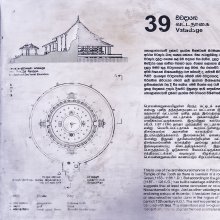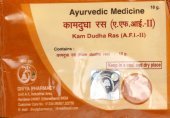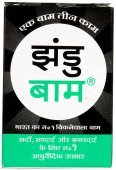Kaam: 1 definition
Introduction:
Kaam means something in the history of ancient India, Hindi. If you want to know the exact meaning, history, etymology or English translation of this term then check out the descriptions on this page. Add your comment or reference to a book if you want to contribute to this summary article.
Ambiguity: Although Kaam has separate glossary definitions below, it also represents an alternative spelling of the word Kama.
Images (photo gallery)
India history and geography
Source: Shodhganga: Vernacular architecture of Assam with special reference to Brahmaputra ValleyKaam is a Karbi term referring to “first room of the house”.—It appears in the study dealing with the vernacular architecture (local building construction) of Assam whose rich tradition is backed by the numerous communities and traditional cultures.

The history of India traces the identification of countries, villages, towns and other regions of India, as well as mythology, zoology, royal dynasties, rulers, tribes, local festivities and traditions and regional languages. Ancient India enjoyed religious freedom and encourages the path of Dharma, a concept common to Buddhism, Hinduism, and Jainism.
Languages of India and abroad
Hindi dictionary
Source: DDSA: A practical Hindi-English dictionaryKaam in Hindi refers in English to:—(nm) work, task; job, employment; performance; function; passion, lust; desire, needlework; embroidery; —[kala] the art of love; —[kumtha] sex complex; —[keli/krida] amorous sport, dalliance; ~[cara] a caprice; ~[cari] capricious; ~[deva] Cupid—god of love; ~[bana] the fire of passion, the flowery arrows of Cupid; —[bhavana] amoristic sentiment; —[mada] oestrus; ~[mudha] overwhelmed by passion; —[vasana] libido, sexual craving; —[vritti] sexual instinct; —[ana] to be of avail or of servive; to come into use; to come to one’s rescue; to help; to be killed or slain (in battle); —[karana] to prove effective, to do the trick; to succeed; —[ko kama sikhata hai] it is work that makes a workman, practice makes a man perfect; —[calana] to manage, to do with, to keep the work going, —[tamama karana] to put an end to; to destroy, to undo; to kill; —[dekho, apana] mind your own business; —[nikalana] to have the work accomplished; —[padana] to have to do with, to have business with; —[pyara hota hai, cama nahi] handsome is that handsome does; —[banana] to have a purpose served; —[bigadana] to make a mess of a business; to put a spoke in one’s wheel; to foil; —[mem jute rahana] to be busy as a bee; —[mem lana] to turn to account, to bring into play; —[lagana] to get busy, to have a pressing engagement; to get employed; —[se kama rakhana] to mind one’s (own) business; —[hona] to have one’s purpose served; to have to do a job..—kaam (काम) is alternatively transliterated as Kāma.
...
See also (Relevant definitions)
Starts with (+102): Kaam-saanchnu, Kaama gaggare, Kaama kasthoori, Kaama kasturi, Kaama pathige balli, Kaama-kasturi, Kaama-pattige-balli, Kaamaana, Kaamakasturi, Kaamalate, Kaamana-balli, Kaamande, Kaamapatige balli, Kaamaun, Kaambessie boom, Kaambos-bessiepitte kouboom, Kaami mosara, Kaamimi-phool, Kaamle, Kaamoni.
Ends with: Kaccha-kaam, Kam, Naamkaam, Pukkam, Simit-kaam, Sunne-kaam.
Full-text (+978): Kam, Kama, Sajilo-kama, Jamgala-jamaune-kama, Kacca-kama, Kama-samcnu, Kambha, Kamaṇa, Ugrasena, Pavanrekha, Upantika, Kamuka, Prakamana, Waan kaam puu, Kamayana, Anasaka, Kantu, Sunne-kaam, Kamdhara, Nikama.
Relevant text
Search found 53 books and stories containing Kaam, Kam; (plurals include: Kaams, Kams). You can also click to the full overview containing English textual excerpts. Below are direct links for the most relevant articles:
Vaishnava Janato < [October – December, 1997]
The Eternal Struggle in Hemingway < [July – September 1975]
Main Tenents of Sankara and Advaita < [October – December, 1997]
Blue Annals (deb-ther sngon-po) (by George N. Roerich)
Chapter 8 - The Chapter on the disciples Bya yul pa < [Book 5 - The Sovereign Lord (Atiśa)]
Chapter 10 - The chapter on Kam pa and Shar ba pa < [Book 5 - The Sovereign Lord (Atiśa)]
Chapter 9 - The Chapter on Rgya ma pa < [Book 5 - The Sovereign Lord (Atiśa)]
Rig Veda (translation and commentary) (by H. H. Wilson)
Shrimad Bhagavad-gita (by Narayana Gosvami)
Verse 2.21 < [Chapter 2 - Sāṅkhya-yoga (Yoga through distinguishing the Soul from the Body)]
Hari-bhakti-kalpa-latikā (by Sarasvati Thkura)
Related products


